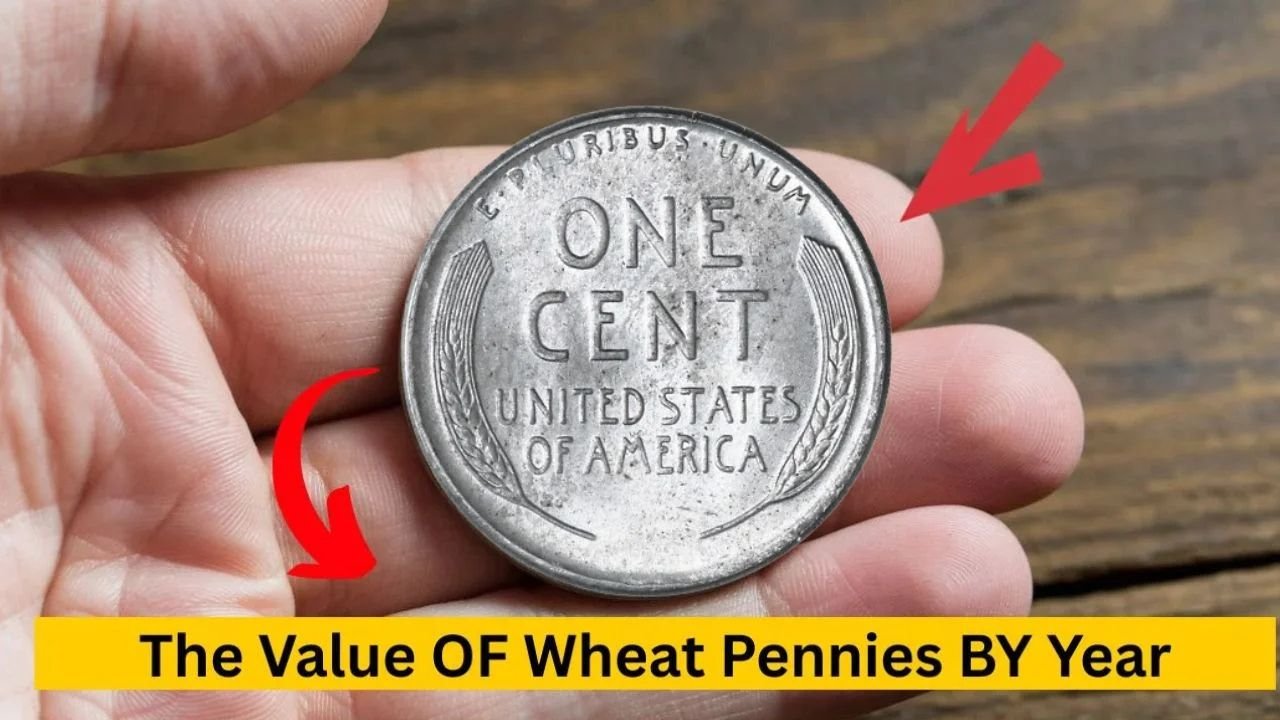The Value of Wheat Pennies by Year: Wheat pennies, officially known as Lincoln Wheat Cents, are one of the most popular coins among collectors in the United States. Minted from 1909 to 1958, these coins feature the iconic image of Abraham Lincoln on the front and wheat stalks on the back. Although they were once just everyday pocket change, many wheat pennies are now worth more than their face value. Their value depends on several factors, including the year they were minted, their condition, and any rare errors that occurred during production.
A Short History of the Wheat Penny
The wheat penny made its debut in 1909 to celebrate the 100th anniversary of Abraham Lincoln’s birth. Designed by Victor D. Brenner, it was the first U.S. coin to feature a real person rather than a symbolic figure. The coin was produced in copper, with the reverse side displaying two stylized stalks of wheat, giving it its nickname. Over nearly five decades, minor design changes occurred, but the basic look remained the same until the coin was replaced by the Lincoln Memorial reverse in 1959.
How to Spot the Rare Sacagawea Dollar Valued at $2.1 Million
Why Year Matters in Wheat Penny Values
The year a wheat penny was minted plays a major role in its worth. Some years had lower mintages, making those coins harder to find today. Other years saw unusual variations or minting errors that increased their rarity and value. For example, a common wheat penny from the 1940s might only be worth a few cents above its face value in average condition, while a rare 1909-S VDB penny can sell for thousands. Collectors often start by learning which years are more valuable so they know what to look for.
How Condition Influences Price
Collectors value coins in different grades, from heavily worn to mint condition. A penny that has been in circulation for decades might be worth only slightly more than one cent, while the same coin in uncirculated condition can be worth many times that amount. Factors like scratches, discoloration, and general wear all lower a coin’s grade. Coins that have been well-preserved, often kept in coin holders or albums, can command premium prices in the market.
Table of Average Wheat Penny Values by Year
Below is a general overview of average values for some common wheat penny years in circulated condition. Prices can rise significantly for uncirculated coins or those with rare variations.
| Year | Average Circulated Value | Key Notes |
|---|---|---|
| 1909-S VDB | $800 – $1,200 | Very rare, low mintage |
| 1914-D | $200 – $300 | Scarce issue |
| 1922 No D | $500 – $800 | Famous error |
| 1931-S | $70 – $100 | Low mintage year |
| 1943 Steel | $0.20 – $2 | Unique wartime steel composition |
| 1955 Doubled Die | $1,000+ | Major doubling error |
These figures are just starting points. The actual price a collector might pay depends on current market demand and coin condition.
Understanding Mint Marks
Mint marks indicate where a coin was produced, and they are often a key detail in determining value. For wheat pennies, common mint marks include “D” for Denver, “S” for San Francisco, and no mark at all for Philadelphia. Certain combinations of year and mint mark are much rarer than others. For example, the 1914-D penny from Denver is far more valuable than the 1914 penny from Philadelphia.
Rare Errors That Boost Value
Some wheat pennies became valuable because of minting mistakes. Doubling errors, missing mint marks, and even unusual metal compositions can make a coin stand out. The famous 1955 doubled die penny, where the date and lettering appear doubled, is one of the most sought-after error coins in U.S. history. These mistakes are rare, so collectors are willing to pay a high premium for them.
Tips for New Collectors
For those starting out, the best approach is to carefully check every wheat penny you come across. Learn how to spot key dates, mint marks, and condition differences. Storing coins in protective holders prevents further wear and preserves their value. Even common wheat pennies can be fun to collect, and they sometimes lead to discovering a hidden gem in your collection.
The Future Value of Wheat Pennies
While most wheat pennies won’t make you rich overnight, their value generally increases over time, especially for rarer dates. As more collectors enter the hobby and the supply of high-quality coins decreases, prices tend to climb. This makes wheat pennies not just a nostalgic keepsake but also a small investment in history.
FAQs
What is the rarest wheat penny?
The 1909-S VDB penny is considered the rarest regular-issue wheat penny, with a very low mintage and high demand among collectors.
Are steel wheat pennies valuable?
Most 1943 steel pennies are common and worth only a small premium, but rare copper 1943 pennies can be worth tens of thousands.
How do I know if my penny is worth more than face value?
Check the year, mint mark, and condition. Compare it with a reputable coin value guide or have it evaluated by a coin dealer.




